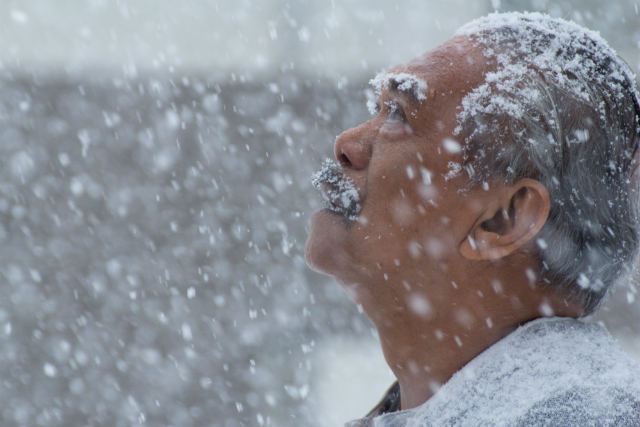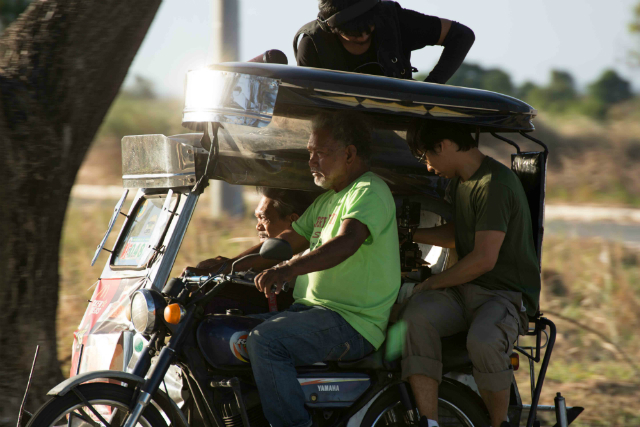
ASIA HUNDREDS is a series of interviews and conference presentations by professionals with whom the Japan Foundation Asia Center works through its many cultural projects.
By sharing the words of key figures in the arts and cultures in both English and Japanese and archiving the "present" moments of Asia, we hope to further generate cultural exchange within and among the regions.
Kenji Ishizaka (hereinafter Ishizaka): The Asian Three-Fold Mirror 2016: Reflections is the inaugural omnibus film of the Japan Foundation Asia Center and Tokyo International Film Festival's joint-project that brings together three filmmakers from Asia into a coproduction in each other's respective countries. In each film, they depict Asia and its people from their own perspectives which, when brought together, reflect each country's societies and cultures onto a trifold mirror; a filmic crossover that we hope will trigger a sense of community and kinship as neighbors in Asia.
The single condition we set for the directors was for each film - or "episode" as I will call them for convenience - was to be shot somewhere in Asia. Other than that, we allowed the freedom to let them and the producers decide. With its premiere at the 29th Tokyo International Film Festival as a starting point, we plan to organize screenings as well as entries into other film festivals across the ocean.
The theme for this inaugural piece is, "Living Together in Asia." With directors from Cambodia, the Philippines, and Japan, and an on-site shoot in Malaysia, each episode reflects the people who traverse each country, each community.
Filming Snow: Blizzards in Winter Hokkaido
Today, I think we'd like to hear from these directors the behind-the-scenes episodes. We have a short Behind-the-Scenes film of the omnibus film, so we'll start with that since they are also interesting documentaries, so to speak.
Now, let's start with the first "episode," SHINIUMA Dead Horse. Mr. Mendoza, I heard you filmed in Hokkaido and Manila during February and March, and worked with Ban-ei Keiba, a [horse] racing track located in Obihiro, Hokkaido. How was shooting in the middle of winter? I suspect it must have been extremely tough.
Brillante Ma Mendoza (hereinafter Mendoza): Oh, it certainly was tough. As you know we don't have snow in the Philippines; we only have the rainy season and dry season and it is always warm. So it was very challenging to shoot in Hokkaido in the winter. But it was also very fun. We don't see snow back home so we enjoyed it. We even played around in the snow too, having snowball fights [smiles]. Our flight back was canceled too because of a snow storm so we ended up staying another half-day and used the time to film some more. Although it wasn't initially in the script, we were able to shoot a beautiful scene in the blizzard.
Ishizaka: So you used the delay to shoot a very realistic scene in the snow.

Isao Yukisada (hereinafter Yukisada) : I doubt even Japanese filmmakers can shoot such a beautiful snow storm.
Mendoza: I think it would be hard for anyone to capture a snow storm like this on film. We ended up with a beautiful scene, so we were really lucky.
Ishizaka: And this is another shot of you and your crew in the Philippines.
Mendoza: Yes. We use these tricycles a lot for short-distance travel, so here we are shooting on it. As you can see, the cinematographer is clinging on the roof without a harness of any kind [laughs]. I often film like this, though. One of my mottos is, "have fun on set." So I'm always finding ways to enjoy ourselves.

Ishizaka: I see. By the way, you sometimes use your crew members as cast members, don't you?
Mendoza: Well, a lot of my films are made with only a few members, so inevitably we each end up playing different roles. For instance, the scriptwriter may fiddle with the camera, or the editor may shoot some scenes. I am the director, but I also may be behind the camera or sometime be the props designer. In the same way, the cast play different roles too. For me, I don't distinguish professional actors from amateur directing; I always keep it to minimal directing with simple explanations so that the actor doesn't have to think too hard or exaggerate the character. "Simple is best" in my opinion.


Ishizaka: So you have only a few in your crew, and you use a small, high-sensitivity camera which makes your shoot in Obihiro even seem like a method used in independent films.
Mendoza: I always make the most of whatever or whoever is in front of me. For instance, this [pointing to a production still] is not lighting used for filming. There just happened to be a street lamp and I moved the camera to where the light would nicely enter the frame. If there was sunlight, I would reposition the actors to spots or areas that would be the most natural and would best light them. Basically, I use the light source that is available at each particular moment and site.
Ishizaka: I heard that you also "made it snow" back in the Philippines.
Mendoza: Yes [smiling]. It was in the Behind-the-Scenes film we just showed - the one with Styrofoam pieces being fanned from above.
Yukisada: How was that?
Mendoza: Oh, it was terrible [all laugh]. There was nothing easy about it. We made it snow blowing pieces of Styrofoam with a fan. Lou [Veloso], our leading actor, was complaining that he was getting bits of Styrofoam in his nose and mouth. Since it's so light-weight, it doesn't float down, it gets everywhere. So we were all getting bits up our noses and in our mouths, so I had fun telling him, "Stop complaining, it's not just you." [Laughs]

Ishizaka: Mr. Yukisada, I'm sure the Japanese film crew have a lot of knowledge about making it snow on set, don't you think?
Yukisada: That's true, but it's still difficult because it never snows the way you want it to. You know, because of the wind. It's very hard to have quiet, beautiful powder snow even in Japan. But Dante's [Mendoza's nickname] "snow" was very beautiful; I was impressed. Maybe he is the first to let it snow in the Philippines [smiling].
Mendoza: I don't know, maybe [smiles].
Yukisada: By the way, the most beautiful snow is made by computer-graphics. But obviously you didn't need it, Dante. If I were in your crew, I would suggest not using CG too.






